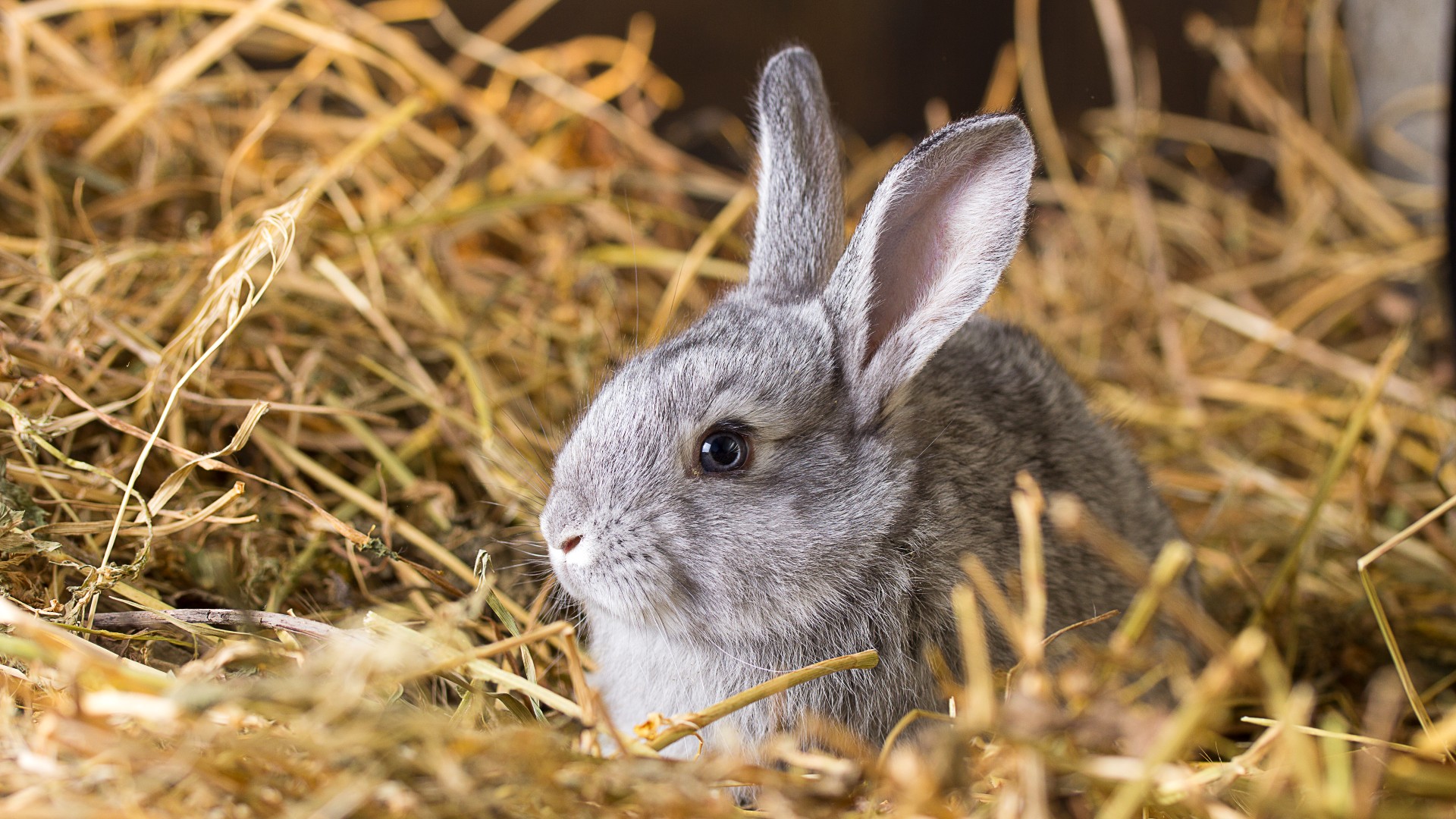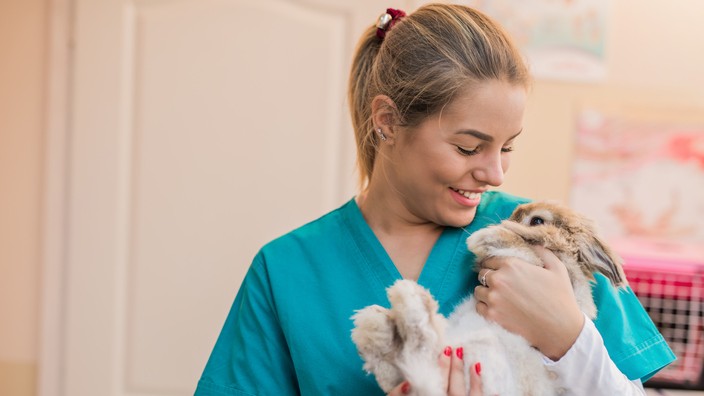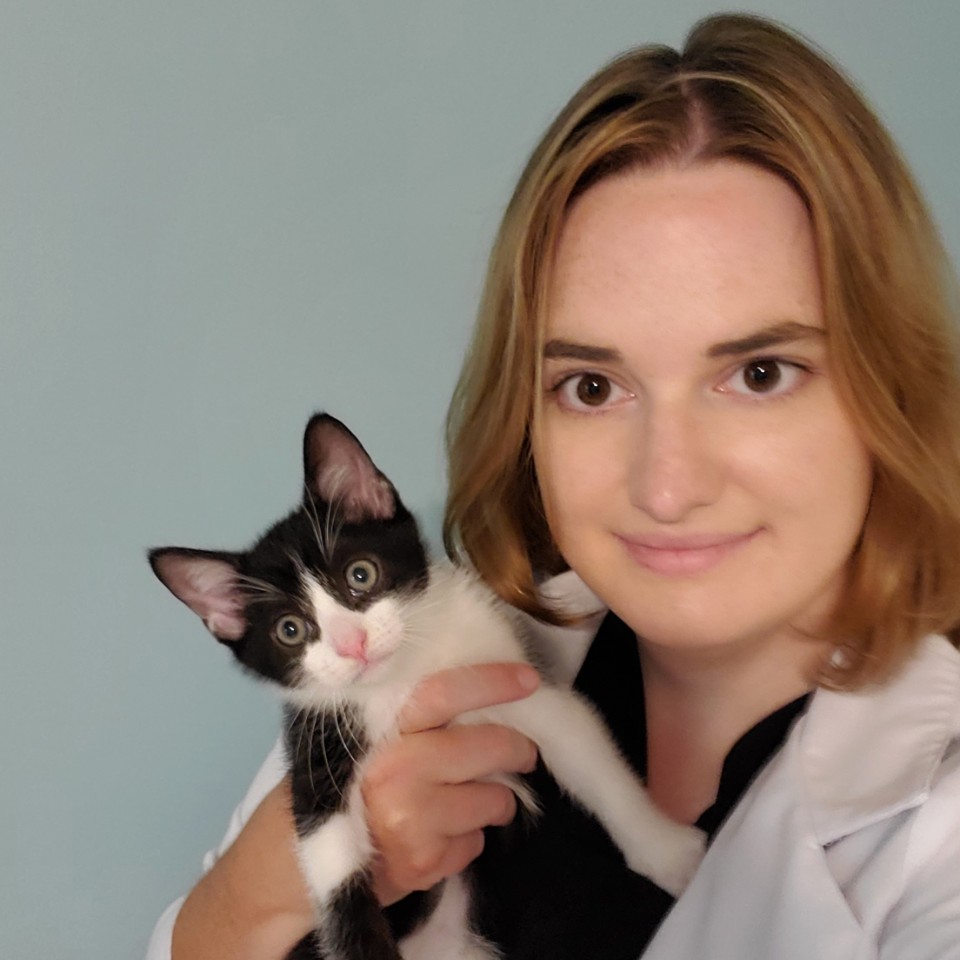Eye problems in rabbits: 5 common ailments
Learn the 5 most common eye problems in rabbits, so you can treat them quickly!

Eye problems in rabbits are fairly common as the eyes are delicate structures and they are susceptible to injury, infection, and genetic conditions, just as they are in humans. Rabbit eyes may be especially prone to injury due to their wide set placement. Rabbits are also very susceptible to stress, and may experience other health problems as a result of a painful eye condition. For this reason, it is very important to see your veterinarian right away if you suspect your rabbit is having an eye problem. Although it can be difficult to find a veterinarian who works with rabbits, getting established with one in advance is the best thing to do so you’ll know where to turn when there is a problem. With eye problems in rabbits, the condition can change rapidly, so don’t delay in seeking treatment. To help you identify eye problems as quickly as possible, we’ve put together this list of the five most common eye problems in rabbits and what you should do about them.
- Best rabbit hutches: Five homes for your floppy-eared friend reviewed
- Best indoor rabbit hutches: Find the perfect bunny retreat
- Best rabbit toys: Make sure you never have a bored bunny
1. Conjunctivitis
One of the most common eye conditions of animals in all species is conjunctivitis, also known as pink eye. Conjunctivitis is an inflammation of the membrane that lines the eyelids and the eye cavity. Conjunctivitis can occur in either one or both eyes, and may be caused by infections, irritants, or trauma to the area. A rabbit with conjunctivitis may have red and swollen eyelids, discharge from the eye, and prominent blood vessels in the white part of the eye. The rabbit may also paw at his face or rub his face on objects because the affected eye is itchy or painful. This condition is usually mild and can easily be treated with prescription ointments or eye washes from your veterinarian. However, if left untreated, conjunctivitis can worsen and may lead to corneal ulcers.
- Are rabbits nocturnal? – What your rabbits do at night
- Can rabbits eat celery? – Dietary advice for your rabbit
- Games for rabbits: Stop your bunny from getting bored
2. Corneal ulcers
The cornea is the clear part that covers the front portion of the eye. When this clear covering becomes damaged, the result is a painful, infected sore on the surface of the eye. Symptoms of a corneal ulcer include discharge (especially mucus or pus) from the affected eye, keeping the eye squinted or closed, redness of the eye, prominent blood vessels in the white part of the eye, and pawing at the eye. Because the cornea is clear, ulcers are typically not easy to see and this makes it difficult to distinguish between a corneal ulcer and a case of conjunctivitis. Your veterinarian will likely use a special fluorescent stain in the eye, which will settle into damaged areas of the cornea and allow them to be visualized with an ultraviolet light. If your rabbit is diagnosed with a corneal ulcer, treatment will likely include topical antibiotics, pain medications, and medications to speed healing. Depending on the severity of the ulcer, treatment can last anywhere from a week to a month or more. In severe cases, surgery may be indicated to help improve healing.
- How to litter box train a rabbit
- Why is my rabbit shedding so much? Causes and how to groom
- Housing rabbits: Choosing the perfect accommodation for your bunny
3. Blocked tear ducts in rabbits (Nasolacrimal duct blockage)
The nasolacrimal duct is a narrow tube that runs from the eye to the nasal cavity, draining excess tears from the eye. This little tube is the reason why your nose runs when you cry! When a nasolacrimal duct becomes blocked, tears can’t drain from the affected eye. This can be caused by infections, inflammation, dental disease, or trauma to the area. Blockage of this duct can lead to excessive tearing, crusting around the eye, discharge from the eye, and mild conjunctivitis. Because these symptoms are so similar to other eye conditions, sometimes these rabbits are treated with topical medications but then they do not exhibit significant improvement. In order to address the blockage, your veterinarian will likely recommend sedating your rabbit and flushing the duct with warm sterile saline to remove any debris or discharge that may be blocking it to reduce the inflammation. Your rabbit will also likely be sent home on medications such as anti-inflammatory medication or antibiotics if needed. In some cases, underlying dental disease can cause the blockage, so this may also need to be addressed.
- Longhaired rabbit breeds and how to care for them
- Why rabbits pull fur out and how to stop them doing it
- How to stop rabbits fighting

4. Cataracts in rabbits
A cataract occurs when the lens of the eye becomes cloudy and opaque. This can occur in one or both eyes and may happen quickly or progress more slowly. Cataracts typically occur due to age, genetics, trauma to the eye, or infection with a parasite called E. cuniculi. Very mild or minimally progressive cataracts may not require any treatment and often have a minimal impact on vision. However, severe or rapidly progressive cataracts are typically treated surgically to preserve vision and reduce pain. Cataracts caused by E. cuniculi may also be treated with oral anti-parasitic medications. Severe, untreated cataracts can lead to blindness and glaucoma. If surgery to correct the cataract is not an option, enucleation – removal of the affected eye – may be recommended to keep your rabbit comfortable. Most rabbits can still have an excellent quality of life after enucleation with appropriate care.
- Guide to rabbit grooming: How to keep your bunny’s hair trim
- A guide to owning Flemish giant rabbits
- A guide to owning Mini Lop rabbits
- A guide to owning Lionhead rabbits
5. Rabbit glaucoma
Glaucoma is an increase in the pressure in the eye, usually due to a reduced drainage of the fluid that fills the eyeball, also known as aqueous humor. It is a complex disease with many possible causes, including genetics, abnormal eye conformation, and as a consequence of other chronic eye conditions. This condition is often accompanied by symptoms such as squinting, swelling of the eye, discharge, and a cloudy appearance. In addition to causing pain and protrusion of the eye, untreated glaucoma will eventually lead to blindness and rupture of the eyeball. Glaucoma is typically treated with topical medications to reduce pressure, improve drainage of aqueous humor, and manage pain. Once diagnosed, your rabbit will need to stay on these medications for life. Frequent rechecks with your veterinarian will be necessary to monitor the intraocular pressure (IOP) and adjust your rabbit’s medications if necessary. In severe cases, your veterinarian may recommend removing the affected eye to reduce pain and pre-empt a rupture.
Don’t wait to address eye problems!
If you suspect your rabbit is having an eye issue, see your veterinarian right away. Eye problems are often painful and can result in loss of vision and permanent damage to the eye, so it is important to seek treatment as soon as possible. In severe cases, your veterinarian may even refer you to a veterinary ophthalmologist for specialty care. Be sure to follow your veterinarian’s instructions and follow up care recommendations closely. With proper diagnosis and treatment, many eye conditions can be cured, and others can be managed to keep your rabbit comfortable and to preserve vision for as long as possible. With prompt treatment and diligent after care, your rabbit will have the best chance at a quick recovery and a return to normal, comfortable vision.
PetsRadar Newsletter
Get the best advice, tips and top tech for your beloved Pets
Dr. Elizabeth Racine is a small animal general practice vet covering all things pet health and wellness. Her special interests include veterinary behavior, nutrition, and internal medicine.
As a freelance writer, Dr. Racine has written content for major companies in the industry such as the American Kennel Club, Merck Animal Health, Bayer PetBasics, Elanco, and CareCredit. In her free time, Dr. Racine enjoys playing trampoline dodgeball, hiking with her beagle Dasher, and spending time with her three mischievous cats.

